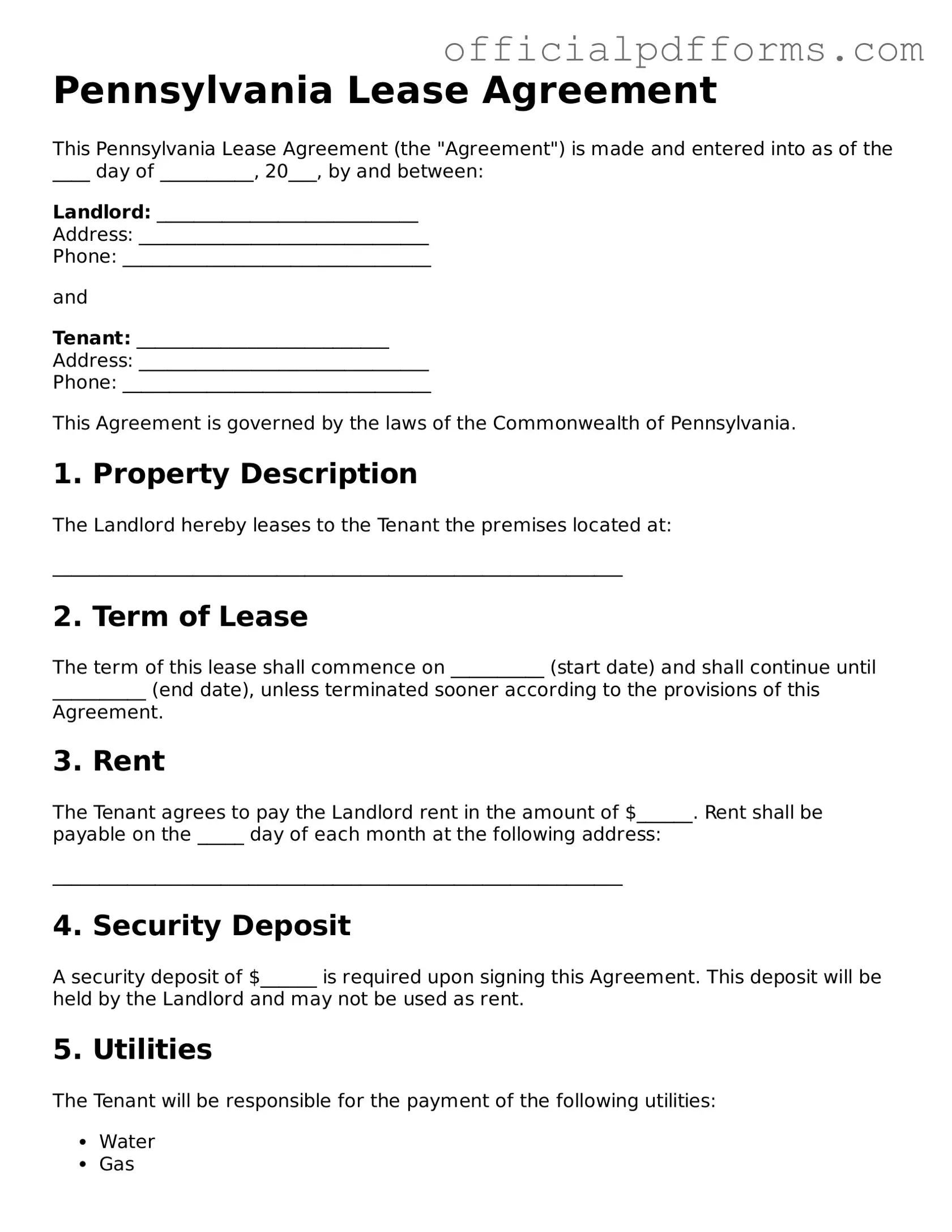What is a Pennsylvania Lease Agreement?
A Pennsylvania Lease Agreement is a legal document that outlines the terms and conditions under which a landlord rents property to a tenant. This agreement typically includes details such as the rental amount, payment schedule, duration of the lease, and responsibilities of both parties.
Who needs a Lease Agreement?
Both landlords and tenants need a lease agreement. For landlords, it provides legal protection and clearly defines expectations. Tenants benefit by having a written record of their rights and obligations, ensuring they understand what is expected during their tenancy.
What are the key components of a Pennsylvania Lease Agreement?
A comprehensive lease agreement should include the following key components:
-
Names of the landlord and tenant
-
Property address
-
Lease duration (start and end dates)
-
Monthly rent amount and payment details
-
Security deposit information
-
Maintenance responsibilities
-
Rules regarding pets, smoking, and alterations
-
Termination and renewal clauses
How long is a typical lease term in Pennsylvania?
Lease terms in Pennsylvania can vary widely. Common durations include:
-
Month-to-month agreements
-
Six-month leases
-
One-year leases
Ultimately, the length of the lease should suit the needs of both the landlord and tenant.
Can a landlord raise the rent during a lease term?
No, a landlord cannot raise the rent during the lease term unless the lease agreement specifically allows for it. If the lease is month-to-month, the landlord must provide proper notice before any increase takes effect.
What happens if a tenant wants to break the lease early?
If a tenant needs to break the lease early, they should first review the lease agreement for any early termination clauses. Generally, tenants may be required to pay a fee or forfeit their security deposit. Open communication with the landlord can sometimes lead to a mutually agreeable solution.
Is a verbal agreement legally binding in Pennsylvania?
While verbal agreements can be legally binding, they are difficult to enforce. A written lease agreement is always recommended to ensure clarity and protection for both parties.
What is a security deposit, and how is it handled?
A security deposit is a sum of money collected by the landlord to cover potential damages or unpaid rent. In Pennsylvania, the maximum security deposit is typically one month's rent. The landlord must return the deposit within 30 days after the lease ends, minus any deductions for damages.
Are there specific laws governing lease agreements in Pennsylvania?
Yes, Pennsylvania has specific laws that govern lease agreements, including the Pennsylvania Landlord and Tenant Act. This law outlines the rights and responsibilities of both landlords and tenants, ensuring fair treatment and legal compliance.
How can a tenant protect themselves when signing a lease?
To protect themselves, tenants should:
-
Read the lease agreement thoroughly before signing.
-
Ask questions about any unclear terms.
-
Document the condition of the property before moving in.
-
Keep a copy of the signed lease for their records.
Taking these steps can help prevent misunderstandings and disputes in the future.
